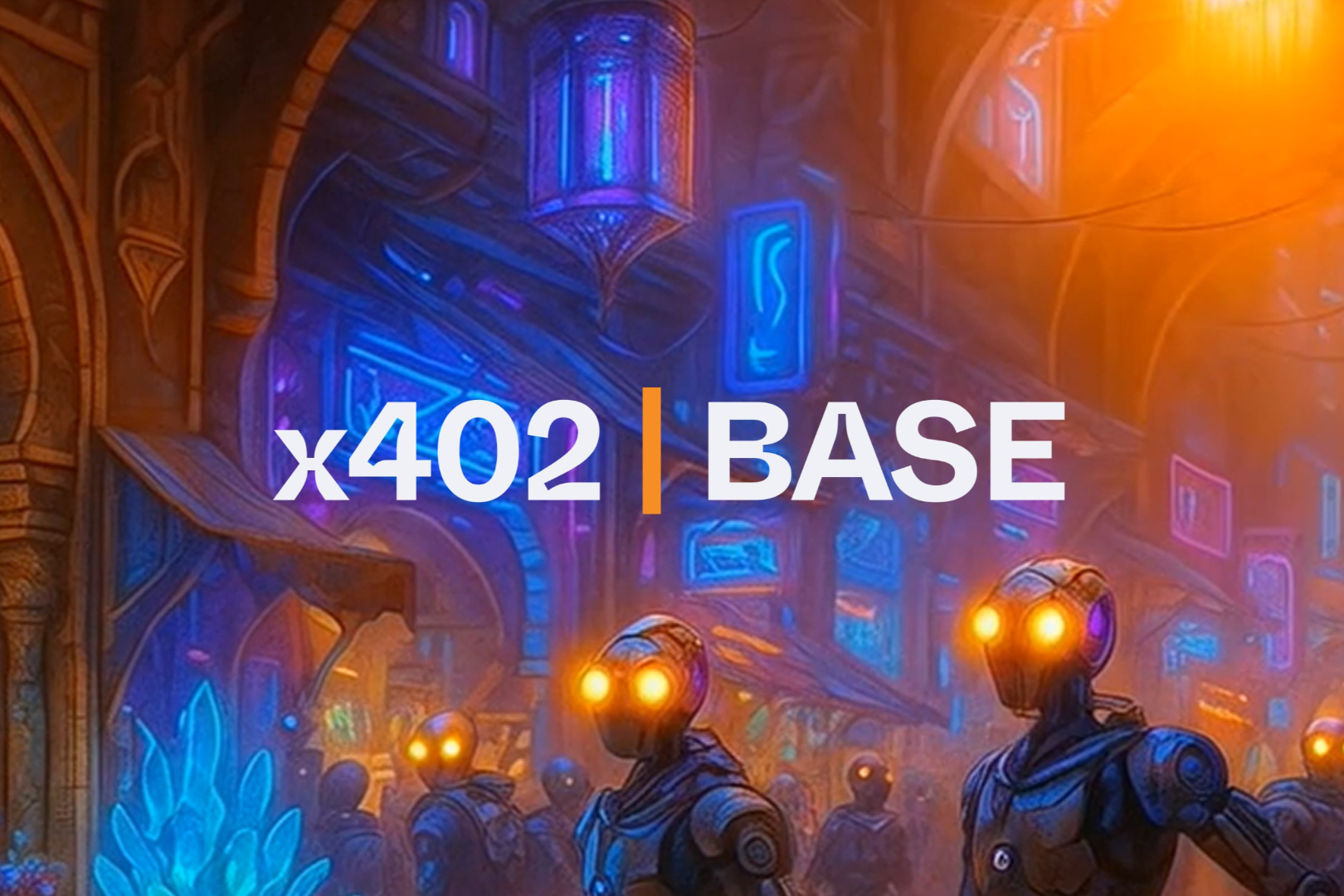Original author: Three Sigma
Original translation: TechFlow
This post provides a glimpse into our ongoing research into points programs. We examine several protocols on the Solana network, comparing their characteristics to identify successful strategies and room for improvement.
“Points provide a quantitative answer to the question of how much a user has contributed to the project” While this statement has almost achieved meme-like status, its essence remains true. In contrast to previous systems, where users participated in the protocol in the expectation of future rewards via airdrops, the points system distinguishes itself by providing a more concrete concept. While the precise value of points may not be clear, users can monitor the evolution of their holdings based on their interactions.
As Arthur Hayes argues in his latest article, the main challenge facing new web3 projects is attracting users, which requires targeted efforts in marketing and business development, especially if the project lacks substantial venture capital. Implementing a points system can be an effective marketing strategy, especially because it allows for flexible adjustment of the points-to-token ratio and incentivizes desired user interactions without being bound by a fixed token issuance schedule. This approach also attracts retail users who are wary of the timing of venture capital unlocking, providing them with earlier investment opportunities and potentially better prices. However, the success of a points program depends on the trust between users and project founders. While it provides advantages in terms of user engagement and fundraising, abuse of trust can undermine its effectiveness in the long term.
Let’s explore the Solana ecosystem through the lens of five protocols that have yet to launch their tokens: Zeta, Marginfi, Kamino, Drift, and Parcl (which have launched tokens as of the time of writing). As different types of protocols, each aims to incentivize various user behaviors. The question is: how exactly do they achieve this?
transparency
First, it is clear that the protocols differ significantly in terms of transparency around their points schemes and, in particular, their calculation methods.
Zeta has demonstrated a commitment to transparency by providing detailed documentation outlining how each action contributes to a user’s Z-score. Their first quarterly program, which began around Solana Breakpoint 2023 and ended on December 31, 2023, focused on rewarding providers. However, the second quarter, which began on January 10th of this year, introduced Z-score rewards for providers, building on the feedback received in the first quarter, even if users felt pressure from market orders and incurred slippage on the Zeta market to accumulate points. Additionally, due to the rapid growth of the protocol, liquidity constraints arose, prompting the decision to incentivize idle market maker liquidity. Notably, this transparent approach facilitated the integration of user feedback and drove the program forward.
However, at this stage, the methodology for converting Z-scores into points remains unclear. What we do know is that 10% of the total token supply will be distributed to holders who demonstrate a long-term commitment to the protocol, with a notable portion reserved for traders who are active on the Zeta platform. Allocations to individual traders will be determined by two key factors: their Z-score and their long-term consistency with the protocol. The impact of Z-scores on token distribution may take a straightforward approach, directly tied to Z-score values, or may employ a tiered system based on specific Z-score thresholds, or perhaps a hybrid of the two. While this aspect introduces some ambiguity into the points system, the team’s emphasis on extensive communication and transparency demonstrates a concerted effort to effectively manage expectations.
Marginfi also provides clear guidelines on how to earn points. However, details such as the duration of the program, the ratio at which points will be converted into tokens, and the ratio of airdropped tokens allocated to point holders remain undisclosed. The Marginfi team defends this approach, claiming that providing precise criteria for airdrops and announcing snapshots in advance would be harmful. They believe that such transparency could attract opportunistic capital and could undermine the efforts of early backers who truly contribute to the project. Marginfi openly admits that some aspects of their points program are intentionally hidden to ensure that organic users are not harmed.
Kamino provides a comprehensive explanation of how users earn points, and can also watch their points balance increase in real time within the dApp, improving the user experience. These Kamino points will be issued in conjunction with multiple rounds of KMNO token airdrops. The initial Genesis Drop is tentatively scheduled for late Q1 or early Q2 2024, although this timeline is not explicitly guaranteed by the protocol; it is consistent with the team's goals. After the Kamino Genesis event, 50 million KMNO tokens will be allocated to OG (pre-points) on a tiered basis. This OG allocation represents 0.5% of the total supply and contributes to the total Genesis community allocation of 7.5%.
Parcl's points program operates on a season basis, with the first season launching on December 15, 2023. This program incentivizes traders and liquidity providers, but the rates were slightly adjusted between Season 1 and Season 2, which started on January 26. Season 3 started on March 2, and this should have been the last season before the TGE. However, on March 19, Parcl introduced a new addition to the points program: perpetual points. This perpetual incentive system is designed to sustainably attract and align liquidity providers, traders, and core community members. Perpetual points will take effect after the end of Season 3, which includes the periodic distribution of network incentives.
Drift recently launched its points program, with the first batch of points distributed on February 2, reflecting activity from January 22 to 31. The program consists of a weekly distribution of points based on users' interactions with the protocol in the previous week. However, there is a lack of clarity regarding the methodology used to calculate the points. Two million points were distributed in the first week, distributed proportionally to users. Future distributions will prioritize trading activity while also rewarding other forms of participation. Drift said the precise calculation method for points will be made public at the end of the program to prevent manipulation of the system and ensure fairness. The program is scheduled to run for a maximum of three months.
Rewarded Actions
Different protocols have different actions for point incentives. Take Zeta, for example, it not only rewards trading volume, but also takes PnL into account. The Z score based on trading volume is calculated directly proportionally, while PnL is rewarded proportionally, with a multiplier depending on the trader's daily ranking. Although not yet operational, the documentation indicates that ongoing activities will also be recognized, and participation in daily, weekly or other specific time periods will be taken into account.
Within Marginfi, users can accumulate points by borrowing, lending, or referring new users. Points are accumulated on a daily basis, meaning that increased lending activity results in higher point earnings. Additionally, the duration of lending is associated with higher point accumulation. To emphasize the importance of borrowing as a key driver of the success of the lending protocol, Marginfi assigns four times more points to borrowing than lending activities.
Kamino's points system applies different ratios and boosts to different types of assets and strategies, including collateral assets, debt assets, collateral and debt combinations, liquidity vaults, and automated strategies such as long-short and leveraged bets (Multiply). Activities such as lending, borrowing, or providing liquidity in a vault generally earn users 1 point per dollar per day, while specific actions such as lending specific assets will earn more points. In addition, all positions from the launch of Kamino in August 2022 to the launch of the Kamino Lend beta on October 20, 2023 will be rewarded with double points per day as a token of gratitude to early users (before the implementation of the points system).
In Q1 of Parcl, traders earned one point per day for every dollar of open interest, while liquidity providers earned 3 points per dollar deposited into the pool. Q2 adjusted the point ratio to 4 points per day for LPs and 2 points per day for open interest. Season 2 also introduced consistency snapshots, turning on point boosts for the most loyal Parcl traders, LPs, and eligible HOA holders (top growth!). Season 3 promises even more recognition for consistent and loyal behavior. Parcl is increasing the number of points per dollar per day for LPs and 2.5 points per dollar of open interest. Additionally, a new point boost structure and new boost tiers are being introduced for every successful liquidation for skilled users, with 50,000 points awarded.
While there is not much information available about Drift’s system, the first point release rewards traders, MMs, and DLP investors for their activities between January 22nd and 31st. Future point releases will reward other activities. Bonus points are awarded for trading on a few selected markets each week. For example, at the time of writing, the bonus points for SOL perpetual futures and spot trading are 5x, and the bonus points for W perpetual trading are 2x.
Partnerships
An interesting aspect of these initiatives lies in collaboration between protocols, particularly with NFTs.
In Zeta, participating in NFT Collaboration Weeks or Bonus Weeks for specific assets can increase your Z-Score by up to 6x. Holders of these NFT collections receive special benefits throughout the season, increasing their Z-Score earning potential. They receive Z-Pass cNFTs through an airdrop, which, when destroyed, will provide a 7-day 2x boost to their Z-Score. Additionally, each community in these collections hosts its own “Community Week” during which holders increase their earned Z-Score by 2x. Zeta Cards leverages compression on Solana to introduce an innovative incentive program that is unique to the Solana ecosystem. The Z-Pass Season 2 collection includes 10,000 collections, including 5 different Zeta Explorer types, each of which provides a variety of rarity levels and boosts on Zeta’s Season 2 Z-Score. In Season 2, Zeta has also partnered with Pyth and Backpack wallets. Users who hold more than $1,000 will receive a 10% Z-Score boost, and users who connect to Zeta using Backpack will receive the same boost.
Marginfi has recently introduced partnerships as a means of earning or boosting points, specifically the recent addition of a 5% points bonus for Bagpack wallet users.
Kamino’s documentation hints at the possibility of providing boosts for activities outside the platform, such as actions performed on other Solana protocols or assets held in your wallet, though specific details have not yet been disclosed.
Users who use at least one HOA NFT on the Parcl platform will receive additional points. Holding one NFT will receive a 20% point gain, and each additional NFT will increase the gain by 5%.
Social and Referrals
Social engagement, which includes activities such as interacting on social media and making recommendations.
Recently, Zeta launched a referral program in the second season of its points program. Now, users can distribute their unique referral link to earn 10% of their referrals' trading fees and 10% of their Z-score. Referred users are also incentivized to use the referral link as it gives a permanent 10% increase to their own Z-score.
In Marginfi, the referring user earns 10% of the points earned by the user they referred. In addition, the referred user will also earn 10% of the 10% earned by the other users they referred. This cascades down the referral tree as more and more users continue to refer other users.
Kamino has said that a referral program will be launched soon.
Parcl recently launched its referral program to complement the points system. By inviting others, you can earn 10% of the points accumulated by each referred user. In addition, the referred users will permanently increase their points by 5%.
While Drift has maintained a referral program for a long time, it appears to be separate from its points program. Referrers will receive 15% of the fees generated by the users they refer to Drift, while the referred users will receive a 5% discount on their fees.
Measures to combat fake transactions and Sybil attacks
While all protocols acknowledge the importance of addressing wash transactions and Sybil attacks, there is a lack of clarity on the specific measures that will be implemented.
Kamino has imposed some restrictions on the airdrop, including limits on points earned on both the collateral and debt sides for positions consisting only of LST, as well as limits on positions consisting only of stablecoins on both sides.
Parcl explicitly prohibits self-referrals and emphasizes that points earned from such activities are subject to revocation. In addition, Parcl provides a Discord process for users who wish to voluntarily disclose self-referrals, thereby minimizing the risk of penalties.
Influence
When evaluating the impact of the points program on protocol metrics, it is important to contextualize it within the broader market to exclude the influence of external trends. The market has been on an upward trend for several months, attracting increased user participation, transaction volume, and TVL. Notably, the Solana ecosystem has experienced significant growth during this period.
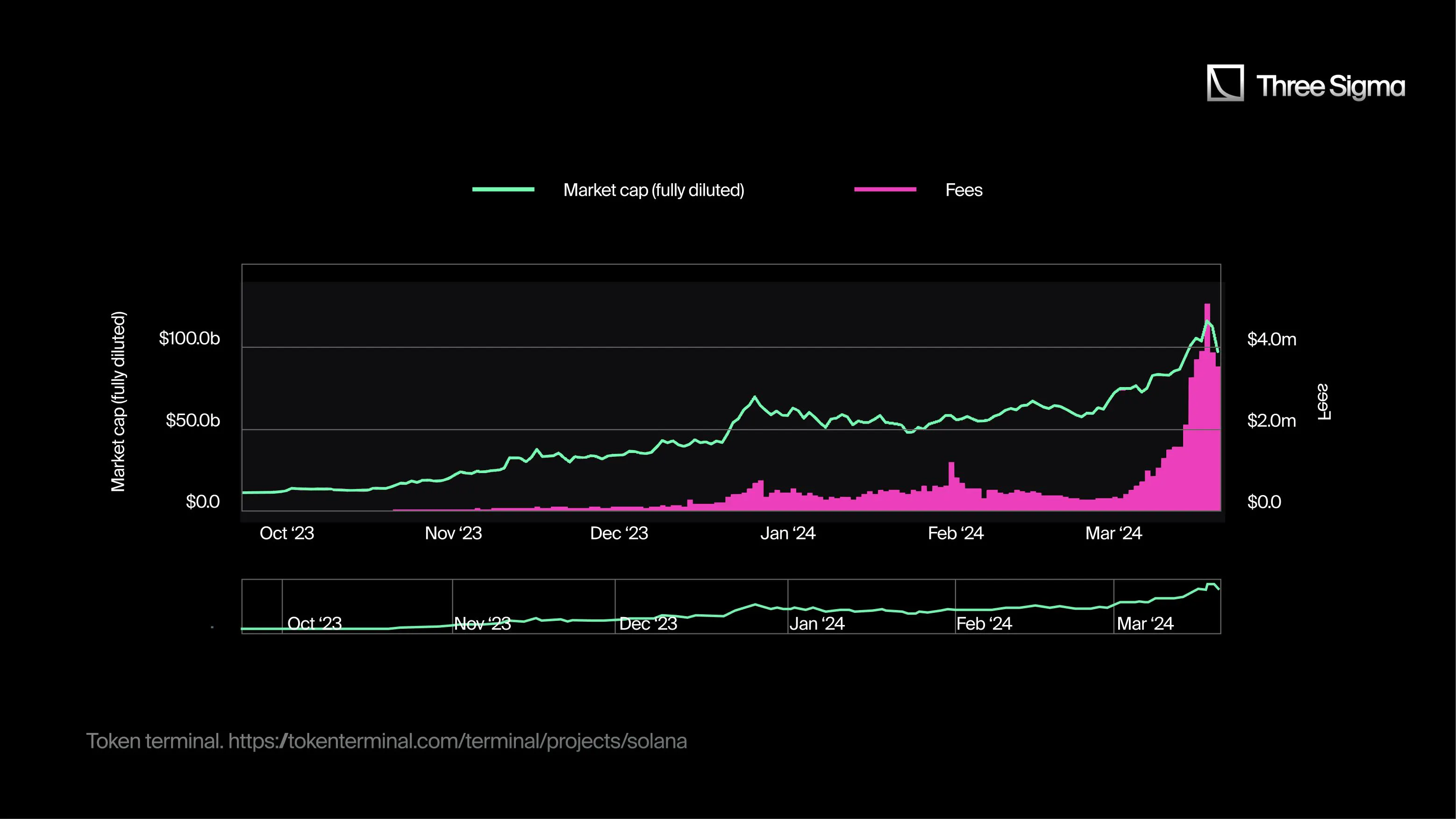
The Jito airdrop also contributed to the surge in Solana’s metrics, highlighting the profitability of pursuing airdrops. The airdrop was announced on November 25, 2023, and the airdrop claim window opened on December 7, 2023. Users holding at least 100 credits will receive a distribution of 80 million JTO tokens. Following Jito’s TGE, the number of active addresses on Solana more than doubled in the following two weeks, from approximately 413,000 on December 7 to approximately 981,000 on December 21.
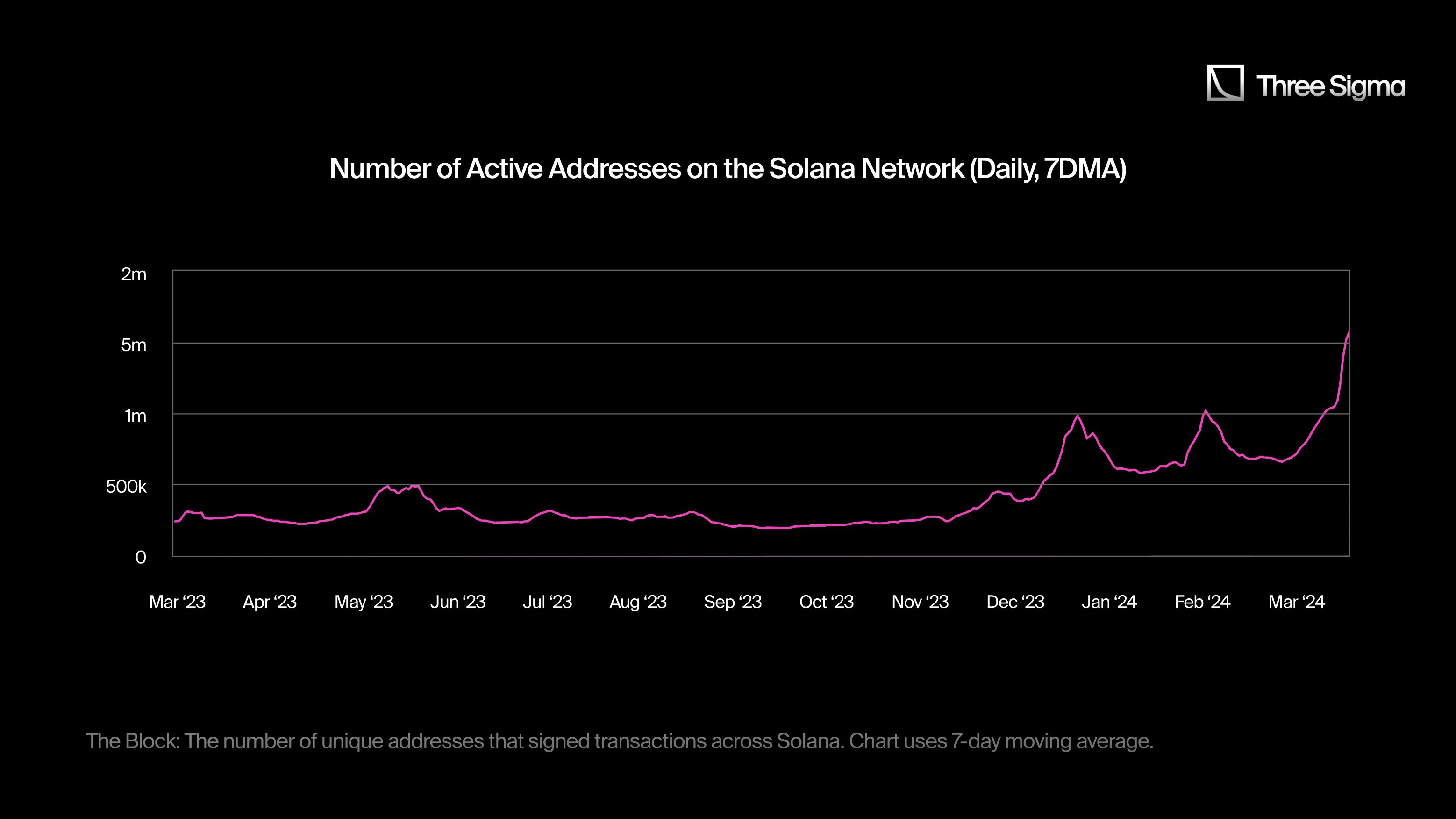
In the broader context, all five protocols benefited from increased attention, resulting in a significant increase in TVL. However, what differences can we see?
Zeta’s TVL initially experienced gradual growth, starting at nearly $1 million in early October, rising to $2.8 million in early November, and reaching $6.5 million by December 7. TVL then rose sharply, doubling in less than a week to $13 million by December 13. Another rapid increase followed, with TVL surging 100% to $133 million on December 31. TVL remained relatively stable at the beginning of the following year, ranging between $13 million and $14 million. Correspondingly, trading volume surged during periods of accelerated TVL growth. The surge after December 7 can likely be attributed to JTO’s market debut. At this point, Zeta had already launched its first quarterly points program, positioning itself to attract users seeking similar opportunities in the Solana ecosystem. Overall, TVL increased by approximately 417% during this rally, from approximately $3 million to approximately $15.5 million. Interestingly, there was a significant spike in TVL on March 20, most likely due to the introduction of the referral system on that day.
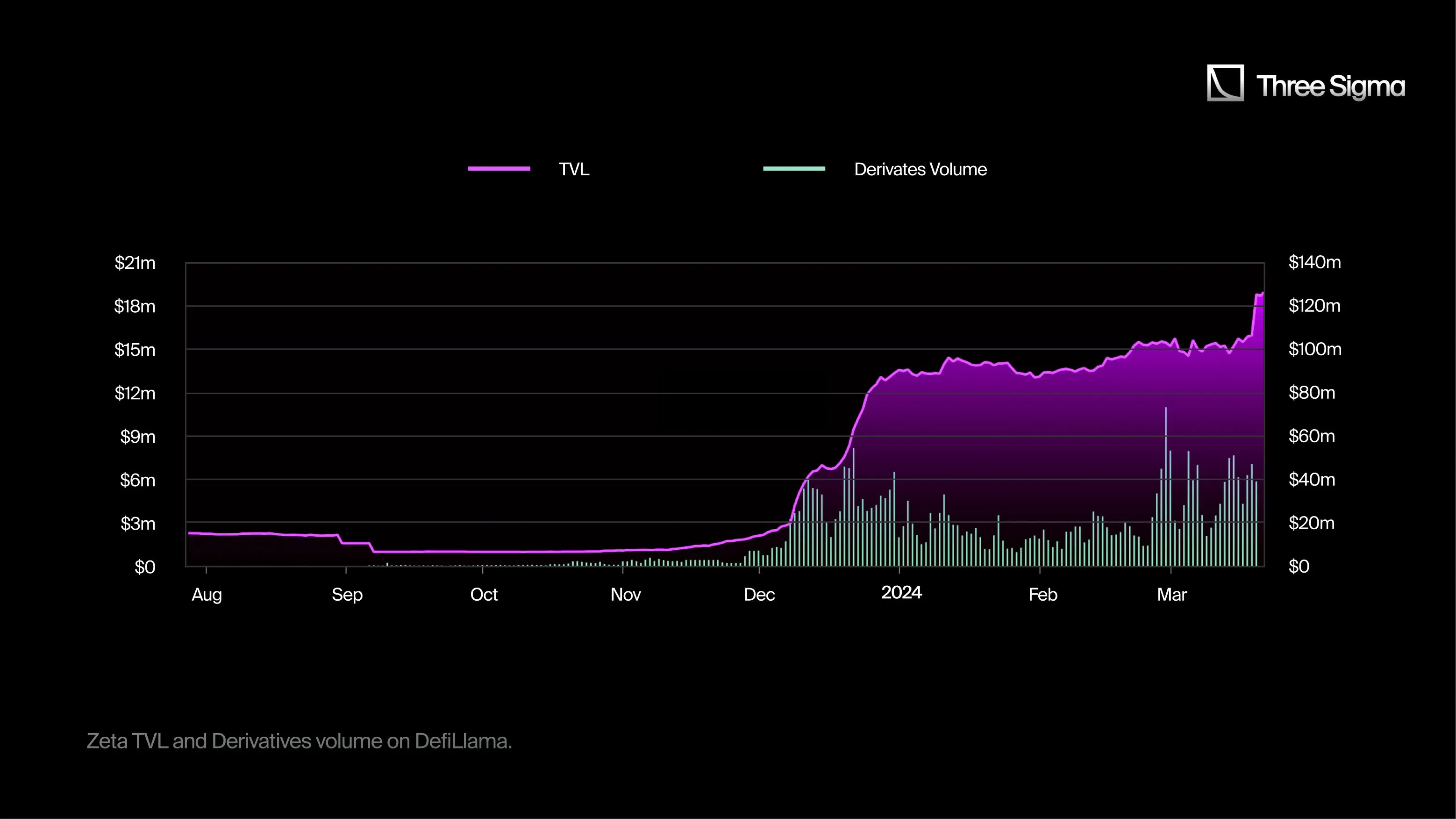
Drift’s trajectory has followed a similar pattern. On December 26, Drift’s TVL peaked at $13.58 billion, surging an impressive 517% from its pre-November TVL of around $22 million. Interestingly, despite the rapid growth in TVL, the release of the Jito airdrop does not appear to have had a significant impact. Notably, Drift’s points program only began in late January, suggesting that the previous surge was driven by organic protocol expansion, heightened market activity, particularly within Solana, and anticipation for future points. Early February sparked a new wave of interest, with trading volumes on the platform surging. Derivatives volumes increased from $132 million on February 2 to $388 million on February 14, more than tripling in two weeks. Subsequently, TVL and trading volumes continued to rise steadily. While Drift has no clear guidelines on how user activity contributes to its points accumulation, users are now seeing their allocations increase every week, with the program expected to end by April at the latest.
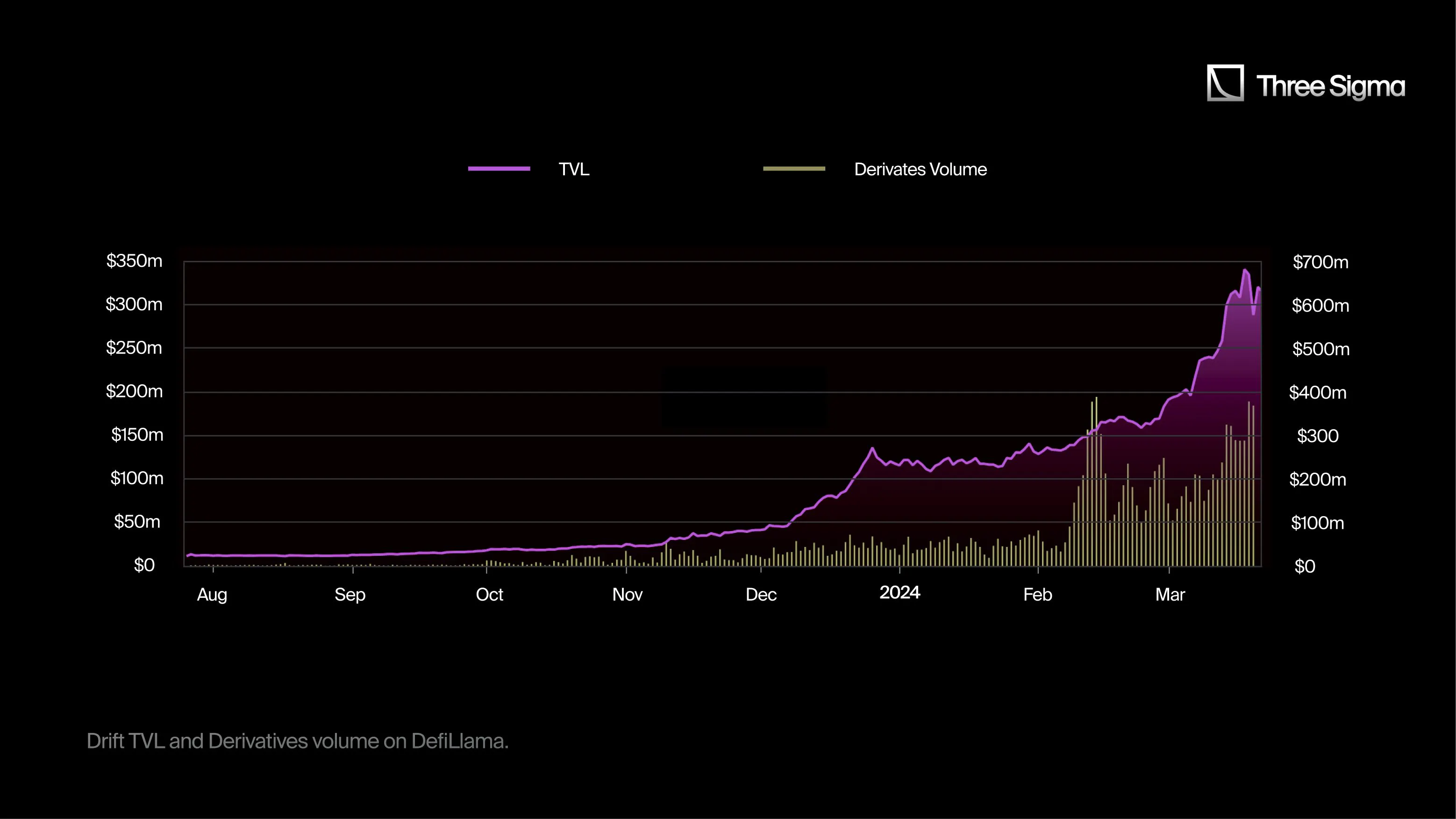
Marginfi experienced a similar but lesser TVL growth pattern as Drift. User deposits to the platform began before November, resulting in an increase in TVL from approximately $25 million in early October to approximately $55 million by November 1st. Like Drift, December 26th was the peak TVL for Marginfi, reaching $430.7 million — an impressive 683% increase since November. In this case, while we aim to isolate the impact of the points program, it is important to acknowledge Marginfi’s adeptness at attracting attention. The platform quickly opened deposits for new tokens, such as listing JTO on the day of its launch. After a pause in TVL in January, deposits began to accumulate again from January 26th. Notably, Marginfi launched its points program as early as July 2023. This is strong evidence that points alone do not attract attention; rather, a thriving ecosystem, market attention, and product-market fit are the true catalysts for its success.
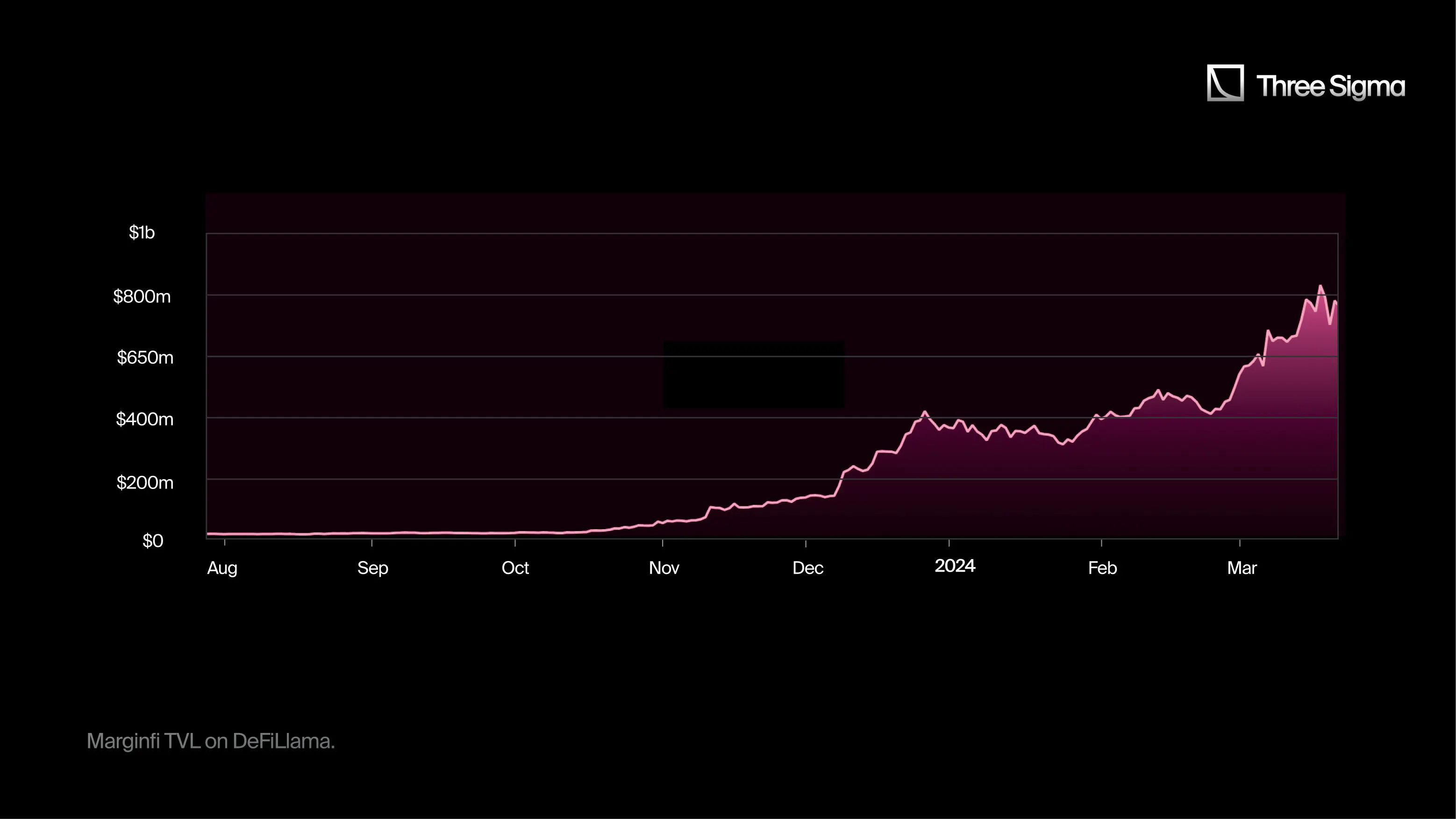
Kamino has seen similar growth in TVL, albeit with a later start. At the beginning of November, the platform only had around $12 million, a figure that gradually grew to $48 million on December 7th, the day of the JTO airdrop. This event appears to have accelerated deposits, causing TVL to also peak on December 26th, at $248 million. This represents growth of around 1967% from November 1st. After a relatively stable month, TVL began to grow again at the end of January, likely also influenced by the announcement of the points program, and now has around $430 million on the platform. In fact, Kamino didn’t announce their points program until January 19th, and despite the significant growth of the platform since then, it still seems to have had a positive impact, increasing by 73% since the local high on December 26th. While February’s continued popularity was impressive, March has been even more impressive. In particular, on March 6th, Drift’s TVL was around $527 million, while on March 8th, this jumped to $692 million, a 31% increase in TVL in just 2 days. This was likely due to an announcement from X that the Q1 snapshot would take place on January 31st. This wasn’t really news, as, as mentioned above, Kamino had always stated that Q1 would last for 3 months and peak at the time of the airdrop. However, it clearly served as a reminder for those who hadn’t yet tried the platform. This sparked some attention and discussion on X over the next few days, and prompted the team to make more announcements about airdrops and points mechanics, further sparking the attention of newcomers. This ultimately led to an impressive $1.2 billion TVL as of March 18th.
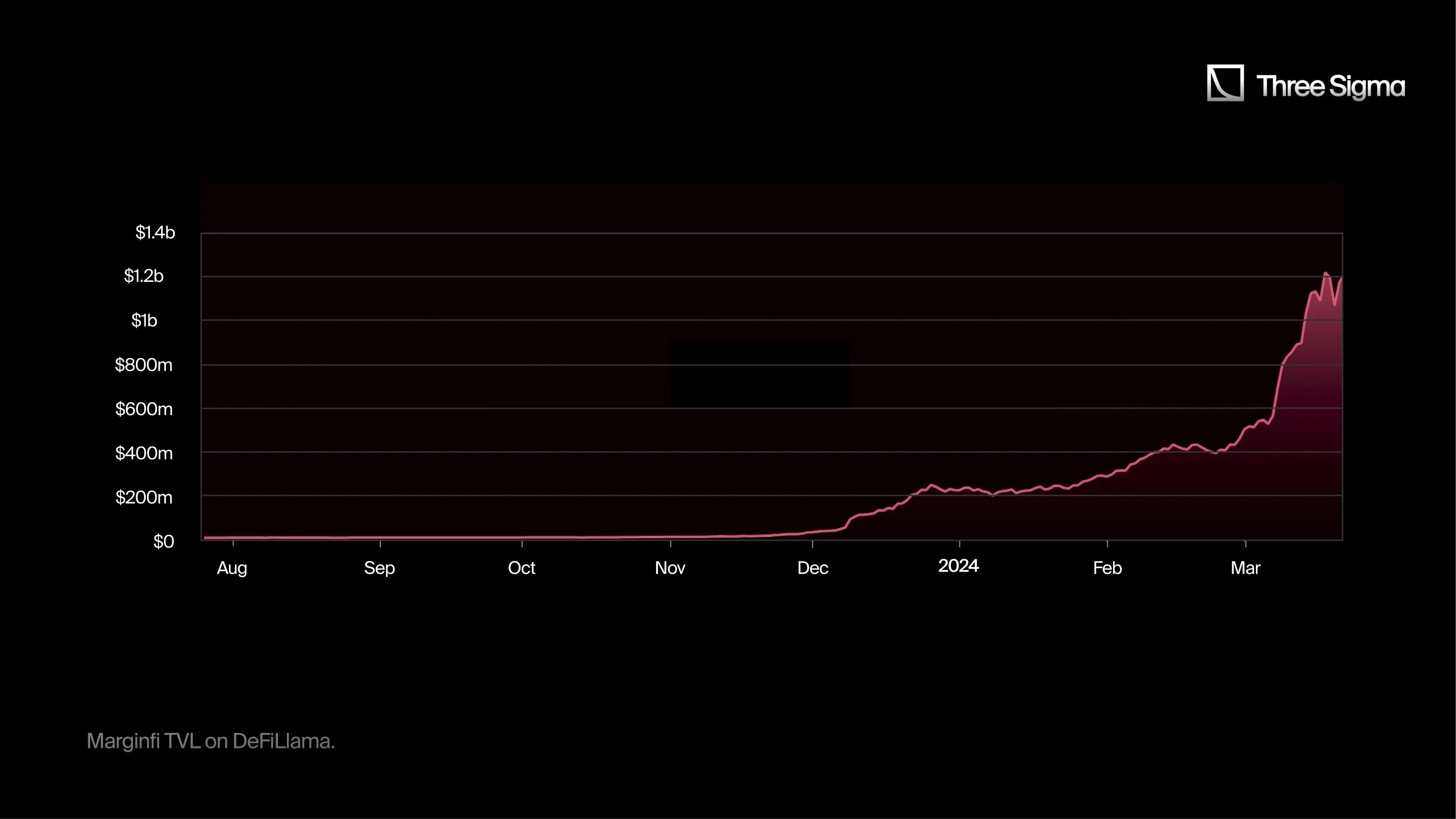
Parcl is a unique project that offers real estate price trading to its users. There appears to be an error in DefiLlama’s TVL description, with some weeks not being calculated correctly. Nonetheless, when considering Parcl’s notional trading volume below, it becomes clear how the project has benefited from similar growth dynamics observed in the other protocols mentioned here. While users have been earning points for their activity, the full rollout of points was announced to go live on December 15th. Since then, trading volume has steadily increased, with notable fluctuations in activity. Particularly notable was the surge from $6.6 million on February 25th to $31.5 million the following day, coinciding with Aevo’s announcement of PARCL presale futures.
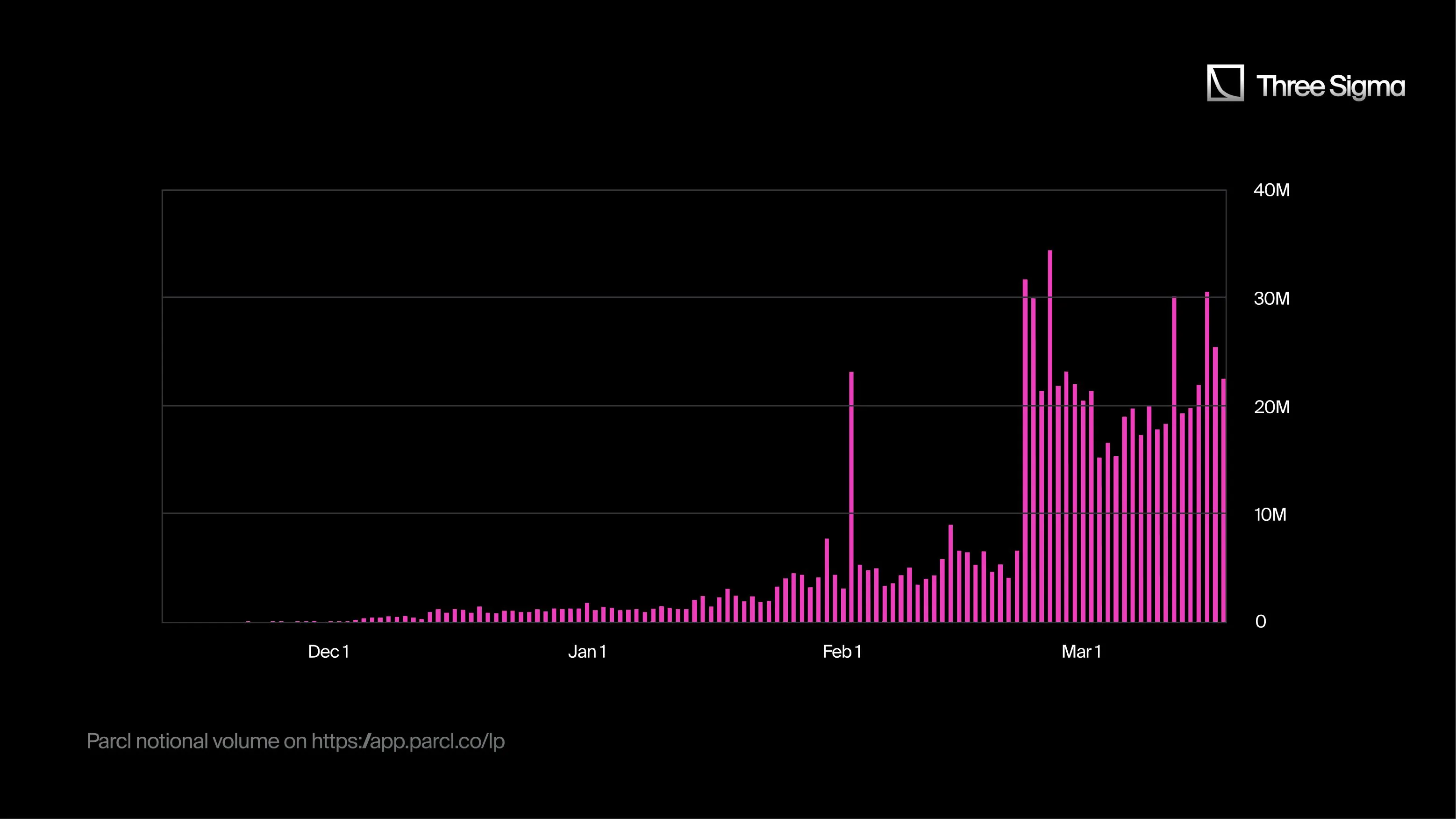
Key Takeaways
Many protocols are currently discussing partnerships with other projects, and while referrals are expected to contribute to points in the future, specific details are currently lacking. However, this trend is expected to have a net positive impact on the space as users recognize the benefits of interacting with multiple projects within the ecosystem.
Most programs operate on a seasonal cycle, using each season as an opportunity to learn and adapt. For example, Kamino outlined that each season will have a different duration, new mechanics, a unique airdrop schedule, and different allocations. Zeta successfully adapted its approach to accommodate increased liquidity needs. Flexibility is critical for projects, as points can unpredictably impact a protocol’s metrics or cause sudden growth surges.
An interesting observation is that market conditions seem to be more significant than the points program itself. For example, despite Drift and Marginfi launching their points programs at different times, their TVL charts are nearly identical. Although Drift does not provide a description of how to earn points, while Marginfi does, this difference seems to have little impact on TVL. Nonetheless, the active presence of a points program, as well as marketing efforts such as weekly airdrops, still matter, as evidenced by Drift’s increased volume following its initial announcement.
Even for projects like Parcl where product-market fit is less obvious, having a highly anticipated token can significantly boost metrics and adoption. The positive impact of referrals is noteworthy, as shown by Zeta’s boost in TVL after introducing this mechanism.
As points programs came to an end, protocols became more willing to speak publicly about plans to further engage users. Parcl launched permanent points, while Kamino prepared for the upcoming season with tailored strategies to keep users engaged.
Overall, most projects seem to agree on prioritizing clarity and transparency while retaining flexibility. Effective marketing also plays a key role in project success. However, it can be challenging to attribute metric improvements purely to new mechanics in the points system, as these improvements are often influenced by marketing efforts designed to spread awareness.



